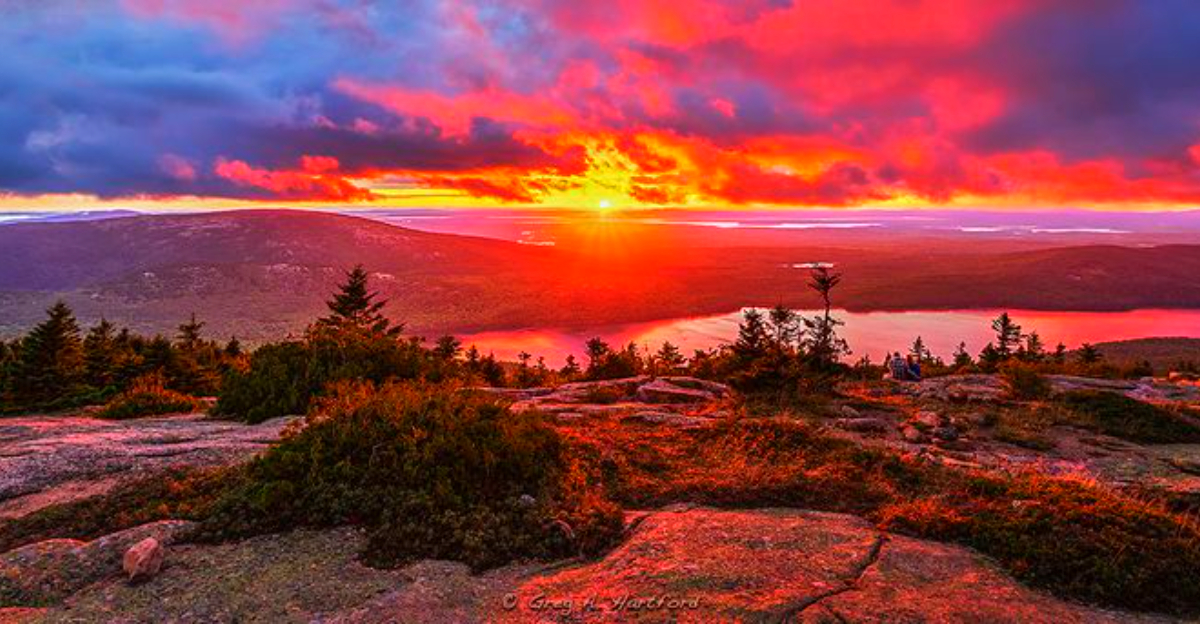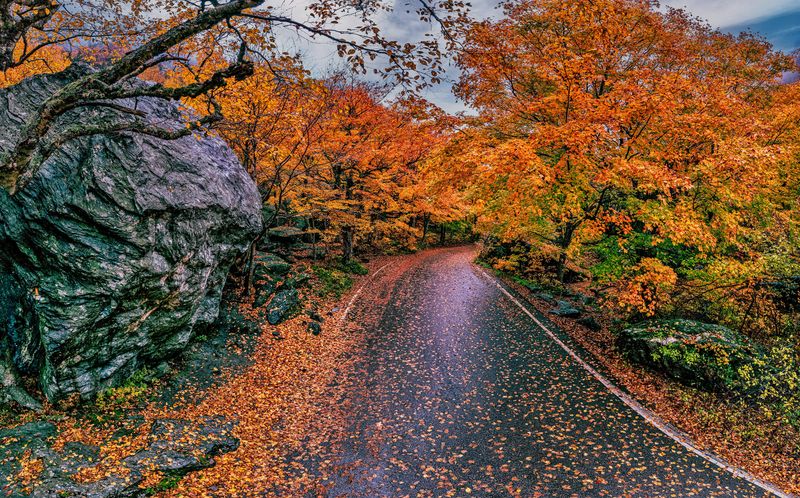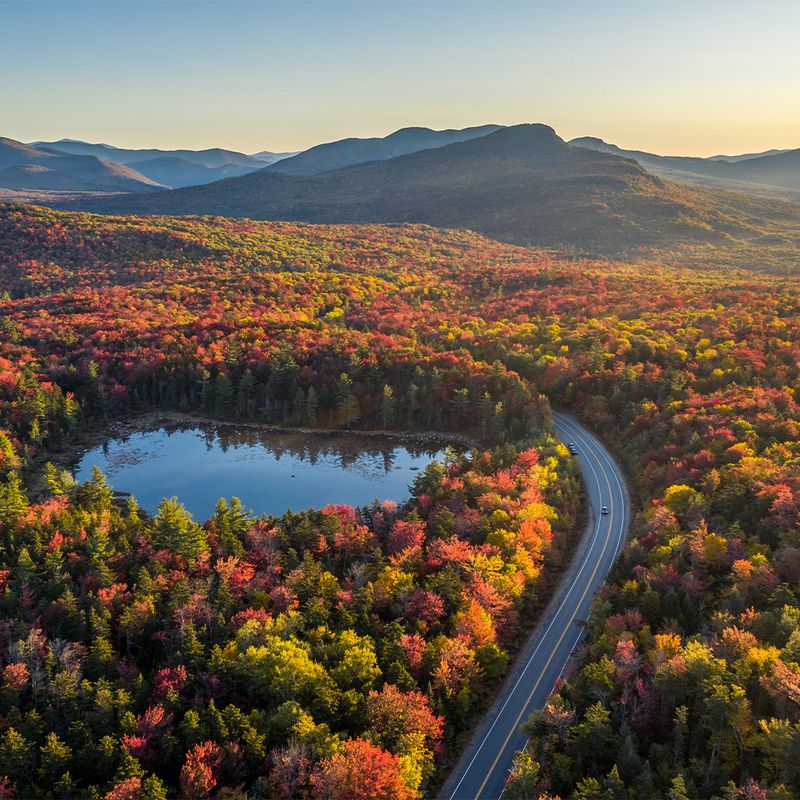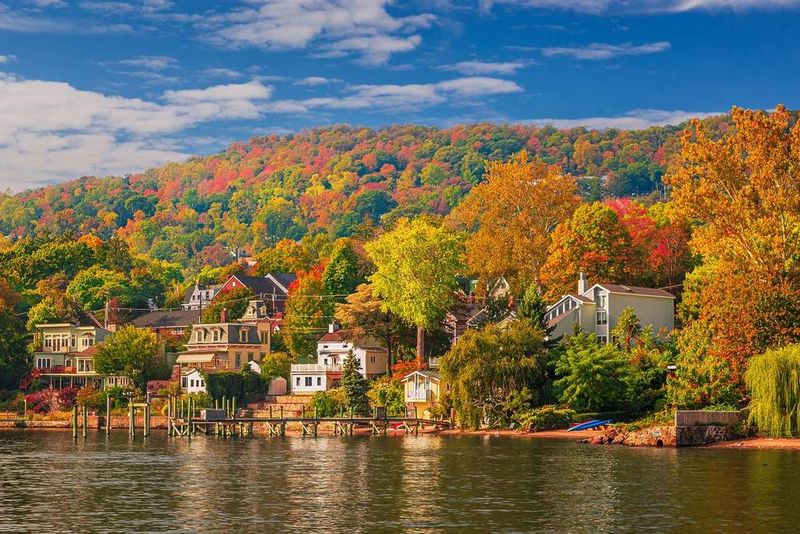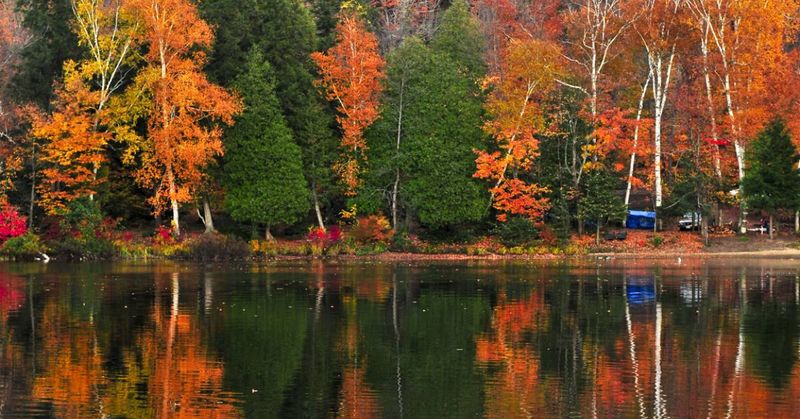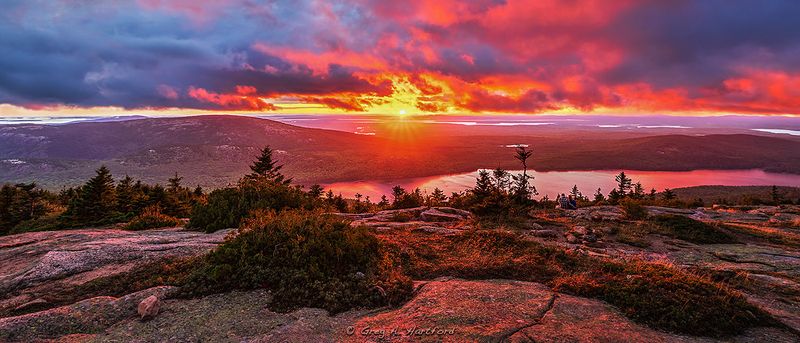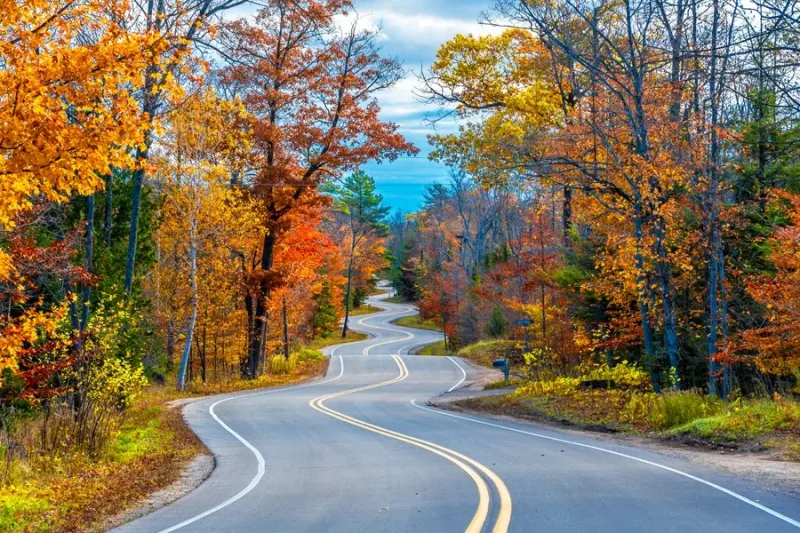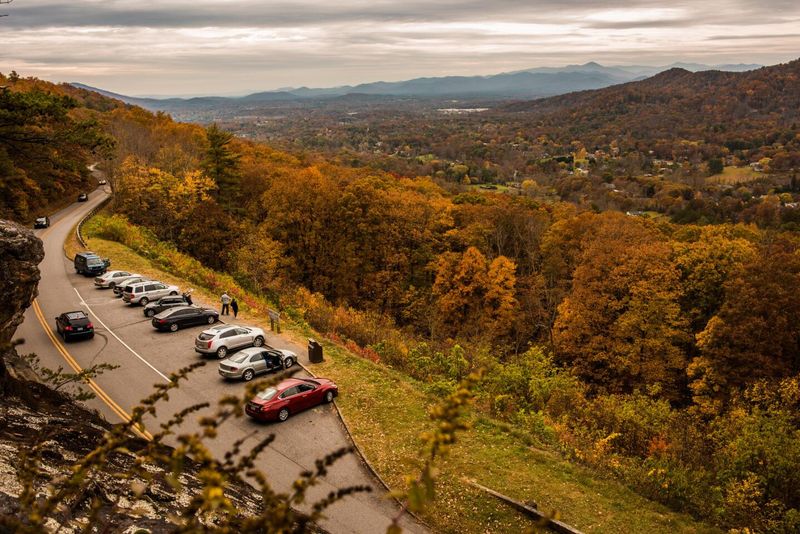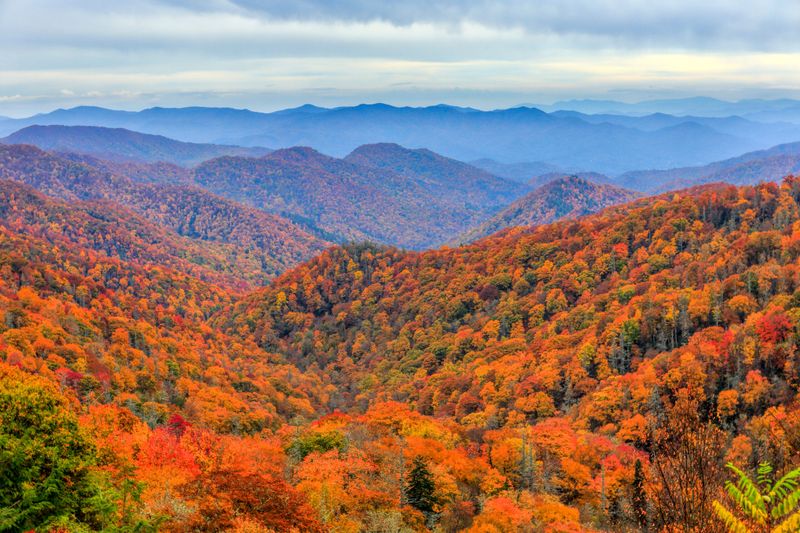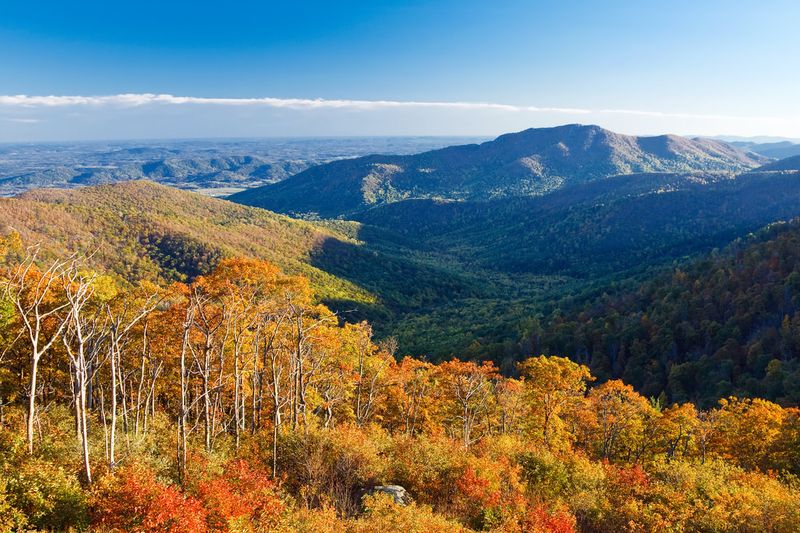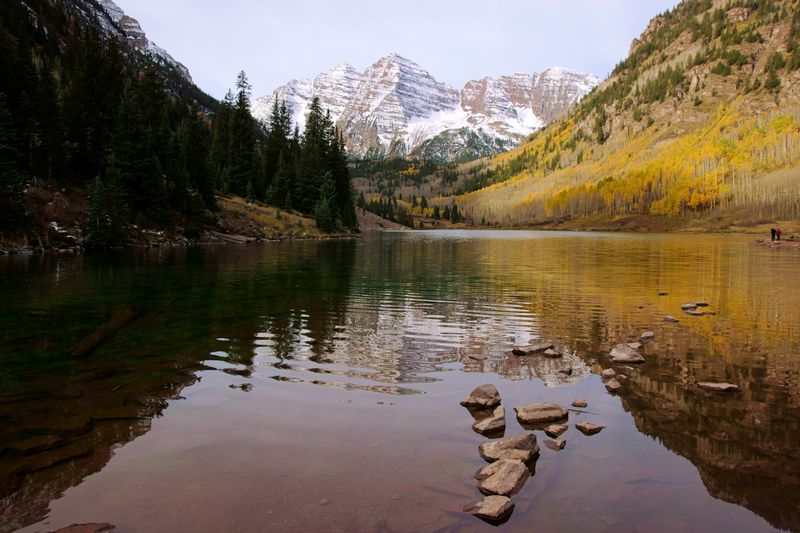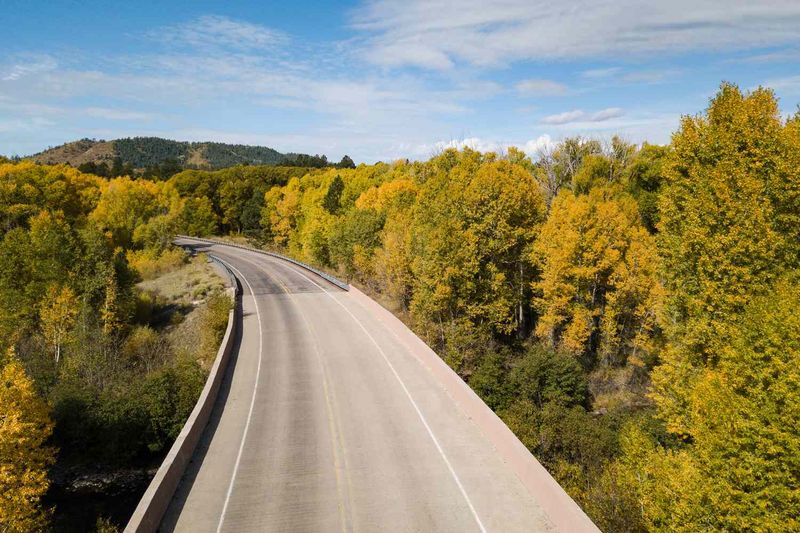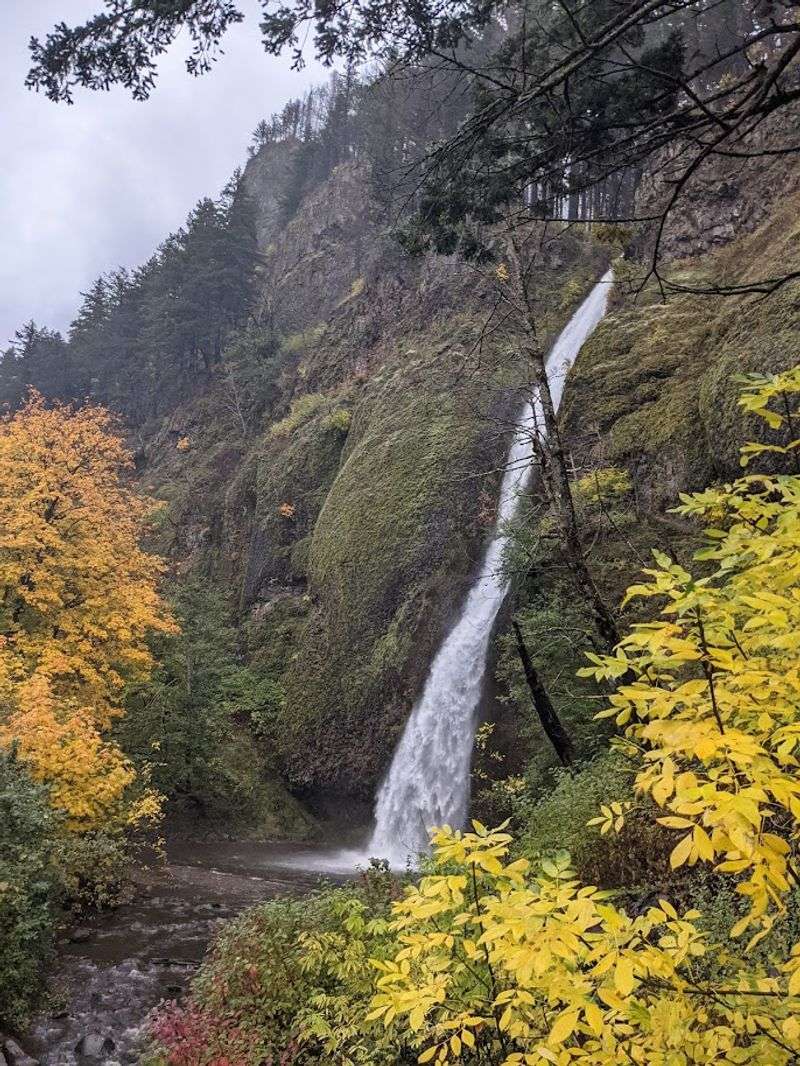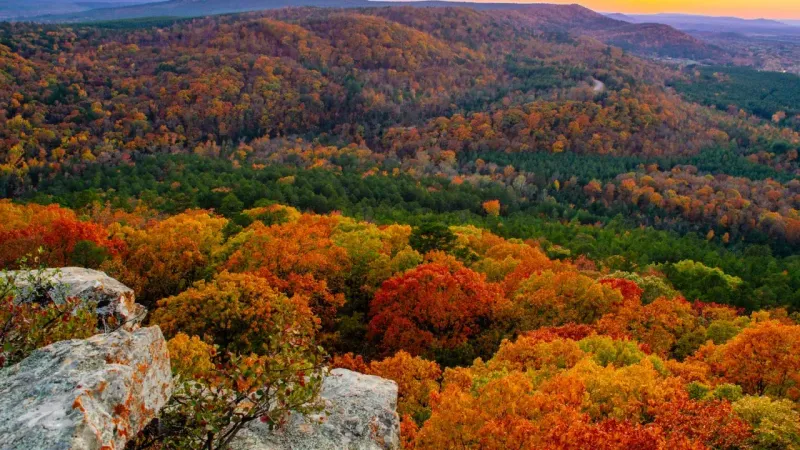Autumn transforms North America into a giant canvas painted with reds, oranges, and golds. Timing your trip to catch leaves at their brightest takes a bit of homework, but the reward is unforgettable scenery and crisp mountain air. Whether you love winding mountain roads, lakeside trails, or historic byways, these weekend getaways will help you experience fall color at its absolute best.
1. Stowe & Smugglers’ Notch, Vermont
Vermont’s Green Mountains wear their finest coat during the last days of September. Stowe and Smugglers’ Notch deliver postcard views around every hairpin turn, especially along Route 108, where maples blaze scarlet against granite cliffs.
Covered bridges dot the countryside, framing those classic New England shots you’ve seen in calendars. The state’s weekly foliage report takes the guesswork out of timing—check it a few days before you leave, then adjust your itinerary to chase the brightest hillsides.
Pack layers; mornings can be frosty, but midday sunshine makes hiking comfortable and rewarding.
2. White Mountains & Kancamagus Highway, New Hampshire
New Hampshire’s White Mountains put on a show that rivals any in the Northeast. The Kancamagus Highway—locals call it “the Kanc”—runs 34.5 miles without a single stoplight, giving you uninterrupted views of flame-orange birches and crimson maples.
Higher elevations turn first, so if you arrive late September, head to the peaks; by early October, valleys catch up. Pull-offs and short trails let you stretch your legs and snap photos without crowds.
Regional trackers post live updates, so you can fine-tune your route day by day and hit the absolute peak wherever you are.
3. Adirondacks & Catskills/Hudson Valley, New York
New York State spreads its color show across three distinct zones, each peaking on its own schedule. The Adirondacks lead the charge in early October, painting six million acres in gold and russet. A week or so later, the Catskills and Hudson Valley follow suit with vineyard-draped hillsides and historic estates framed by fiery oaks.
New York’s official foliage report breaks down conditions by region, so you can target the zone that’s glowing brightest. Scenic byways like Route 28N and the Taconic State Parkway offer mile after mile of leaf-peeping perfection.
4. Finger Lakes, New York
Eleven long, narrow lakes carve through upstate New York, and come October, the surrounding hills ignite with color. Higher ridges turn first, while lakeshores lag behind by a few days, giving you a staggered palette if you time it right.
Wineries line the slopes, so you can sip Riesling with a view of crimson and gold vines tumbling toward the water. The Finger Lakes Tourism Alliance updates expectations city by city, helping you pinpoint which lake—Seneca, Cayuga, Keuka—will be peaking when you arrive.
Book lodging early; weekends fill fast once the forecast looks promising.
5. Acadia National Park, Maine
Maine’s only national park sits where mountains meet the Atlantic, and mid-October brings a collision of fiery maples and deep-blue sea. Park Loop Road curves past granite shores and through tunnels of orange and red, while Cadillac Mountain offers the earliest sunrise in the United States—plus 360-degree fall views.
Timing matters: a week too early and leaves stay green; a week late and they’ve blown away. Current reports help you nail the window, usually somewhere between October 12 and 19.
Arrive at dawn to beat crowds and catch that golden light on the foliage.
6. Upper Peninsula, Michigan (Porcupine Mountains, Keweenaw)
Michigan’s Upper Peninsula flips the color switch earlier than almost anywhere in the Midwest. By late September, the Porcupine Mountains and Keweenaw Peninsula glow with sugar maples, aspens, and birches in full autumn regalia.
Waterfalls tumble through forests ablaze with color, and Lake Superior’s cobalt waves provide a dramatic backdrop. The U.P. fall color report updates weekly, and Pure Michigan aggregates statewide conditions, so you can track the wave of color as it sweeps south.
Pack a jacket—lake-effect breezes keep mornings brisk, even when the sun is shining and the colors are electric.
7. Door County, Wisconsin
Wisconsin’s thumb juts into Lake Michigan, and by mid-October its cherry orchards, birch groves, and maple forests turn the peninsula into a quilt of warm hues. Door County’s charm lies in its small-town feel: lighthouses, fish boils, and farm stands selling apple cider dot the landscape.
Travel Wisconsin’s live color map pulls reports from over a hundred local observers, giving you real-time intel on which stretch of Highway 42 or 57 is peaking. The third weekend of October usually hits the sweet spot, when reds and golds are at their most intense.
8. Blue Ridge Parkway & Asheville, North Carolina
The Blue Ridge Parkway stretches 469 miles, and fall color cascades down its slopes like a slow-motion waterfall. High-elevation overlooks near Grandfather Mountain blaze in late September, while valleys around Asheville peak in late October.
This staggered schedule means you can chase color up or down the mountain, matching your hikes and scenic stops to the elevation forecasts published weekly. Asheville itself offers craft breweries, farm-to-table dining, and a vibrant arts scene—perfect for unwinding after a day of leaf-peeping.
Weekends draw crowds, so start early or explore lesser-known pull-offs for quieter views.
9. Great Smoky Mountains National Park (TN/NC)
America’s most-visited national park doesn’t have one peak date—it has dozens. Color starts on the highest ridges in late September, then rolls downhill like a slow tide, reaching the valleys by early November.
That means you can visit almost any October weekend and find brilliant foliage somewhere in the park. The National Park Service explains this elevation-driven cascade in detail, helping you match your itinerary to the color zone that’s peaking when you arrive.
Clingmans Dome, Cades Cove, and the Roaring Fork Motor Nature Trail each offer distinct fall experiences worth planning into your weekend.
10. Shenandoah National Park, Virginia
Skyline Drive runs the spine of Shenandoah National Park for 105 miles, offering overlook after overlook of Virginia’s Blue Ridge draped in fall color. Mid-October usually delivers the best show, though elevation and which side of the ridge you’re on can shift peak dates by a week.
The National Park Service posts current conditions and any road closures on its fall planning page, so check before you head out. Hiking trails like Old Rag and Hawksbill reward you with 360-degree views of forests lit up in crimson and gold.
Arrive early on weekends; parking fills fast when the forecast is perfect.
11. Aspen/Maroon Bells & Colorado Rockies
Colorado’s high country flips the script: aspens turn gold before most eastern hardwoods even think about changing. By mid-September, groves around Maroon Bells, Independence Pass, and Kebler Pass shimmer like coins scattered across the mountainsides.
Timing can be tricky—drought or an early cold snap can push peak a week earlier. Aim for the third weekend of September, starting at the highest passes and working your way down as color descends.
Local forecasts and recent trip reports help fine-tune your plans, ensuring you catch the aspens at their brightest before the first big snowstorm strips the leaves away.
12. Enchanted Circle Scenic Byway, New Mexico (Taos–Red River–Angel Fire)
New Mexico’s Enchanted Circle loops 84 miles through the Sangre de Cristo Mountains, connecting Taos, Red River, and Angel Fire. Late September through early October, aspens light up the high slopes around Bobcat Pass and the Moreno Valley in brilliant gold.
The contrast between golden aspens and New Mexico’s cobalt sky is almost unreal—photographers dream about this light. State resources and live maps help you time your visit to catch the peak, which usually lands the first weekend of October.
Pack sunscreen and a hat; at 9,000 feet, the sun is intense even when temperatures are cool and the leaves are falling.
13. Columbia River Gorge, Oregon (Historic Highway & waterfalls)
Oregon’s Columbia River Gorge carves a dramatic corridor through the Cascades, and fall brings a blend of golden maples, russet oaks, and evergreen firs. The Historic Columbia River Highway winds past waterfalls like Multnomah and Latourell, framing them with autumn color.
Late September through mid-October is prime time, especially as you climb toward Mount Hood. Recent highway improvements have reopened access to some waterfall trails, making it easier to hike into the best color zones.
Verify any temporary restrictions before you go, and plan for variable weather—rain gear and layers keep you comfortable on the trail.
14. Ozark National Forest & Jasper, Arkansas
Arkansas flies under the radar during fall, but the Ozarks deliver spectacular color that peaks later than most of the country. Late October—sometimes sliding into early November—hickories, oaks, and sweet gums blaze across the hills around Jasper and the Buffalo National River.
This later schedule makes the Ozarks a great backup if you missed peak elsewhere, or if you just want one more weekend of leaf-peeping before winter arrives. Regional forecasts consistently place Arkansas near late-October peak, giving you a reliable window to plan around.
Bring a camera and hiking boots; trails and overlooks are plentiful and rarely crowded.
